
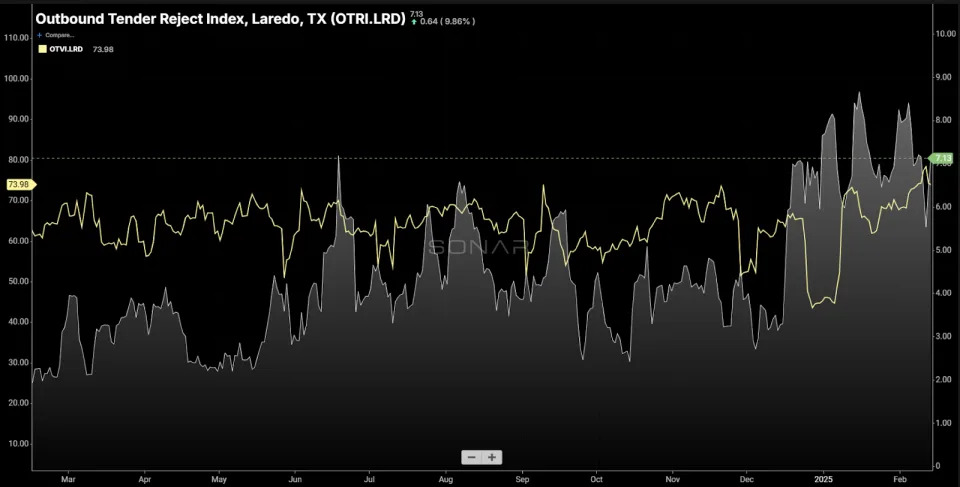
Chart of the Week: Outbound Tender Reject Index, Outbound Tender Volume Index – Laredo SONAR : OTRI.LRD , OTVI.LRD
Shipper requests for truckload capacity are being rejected at the highest rates since the pandemic era in Laredo, Texas — the largest U.S. border crossing market.
The Outbound Tender Reject Index ( OTRI ) measures the percentage of truckload capacity requests that carriers decline. Since rejecting loads is generally undesirable for carriers, rising rejection rates indicate a tightening market with limited available capacity.
Rejection rates for loads out of Laredo averaged around 3.8% from October through mid-December but surged over 6% just before Christmas and have unexpectedly remained elevated.
Demand alone may not explain the tightening
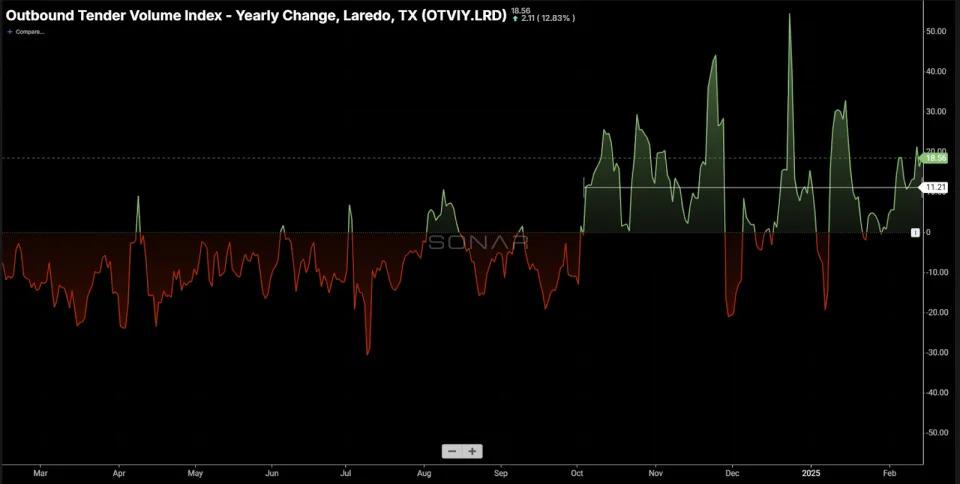
Since October, demand has been running approximately 10% higher year over year, yet rejection rates only spiked around the holidays. This suggests that demand alone may not explain the market tightening.
One potential driver is uncertainty surrounding U.S. trade policy. Over the past month, President Donald Trump threatened, implemented and then paused tariffs on Mexico, the U.S.’s largest trading partner by value. This uncertainty was anticipated before the election, which may explain the sustained growth in cross-border freight demand as shippers rush to move goods ahead of potential cost increases. However, the rising rejection rates suggest additional factors at play.
Laredo’s unique market dynamics
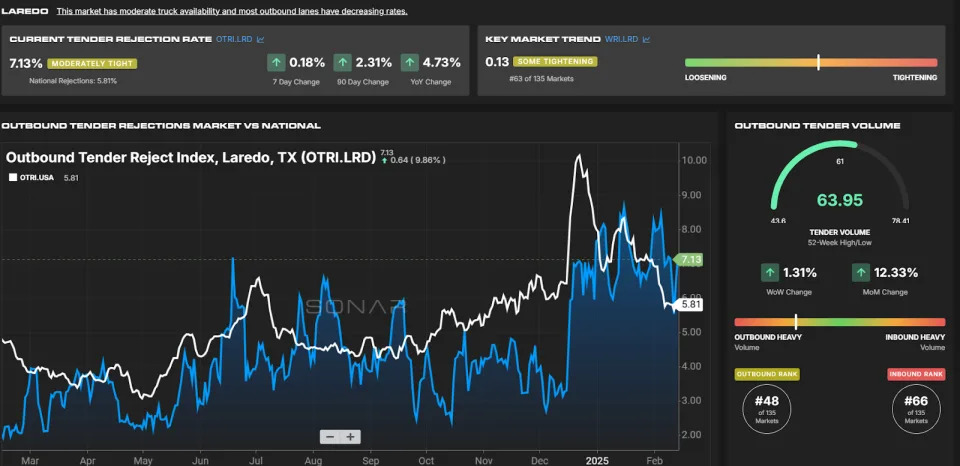
From an outbound freight perspective, Laredo is a relatively small market. It ranks 48th out of 135 U.S. freight markets, with just 0.7% of total outbound freight volume. Its location — a day’s drive from Dallas and just over a half-day from Houston — makes it relatively remote.
Most notably, Laredo handles far more freight moving out of the region rather than originating there, a trend that has intensified over the past year. When freight markets become heavily outbound-focused, carrier networks can become strained, leading to supply chain inefficiencies.
Pricing matters
In major outbound-heavy markets like Los Angeles, pricing accounts for the additional cost of repositioning empty trucks (also known as “deadheading”). Shippers pay beyond the direct transport cost, covering the expenses carriers incur when relocating equipment.
However, Laredo’s cost to serve has risen even as broader freight rates decline. Carriers have struggled to pass along these repositioning costs, reducing their incentive to prioritize Laredo-bound freight.
Contract rates in key lanes, such as Laredo to Dallas, have increased 13% year over year, according to SONAR’s invoice data, while spot rates in this lane have risen 8%. Yet, these increases have not kept enough carriers in the market to prevent rising rejection rates.
One major reason: Carrier attention remains focused on California, where import-driven demand has stayed elevated for over a year.
California’s freight boom is drawing capacity away
The Los Angeles market appears to be absorbing much of the available truckload capacity. Geopolitical concerns and tariffs have pushed Asian imports to near-pandemic levels, further strengthening demand. Unlike Laredo, Los Angeles is a massive freight hub with longer lengths of haul, making it a more attractive market for carriers.
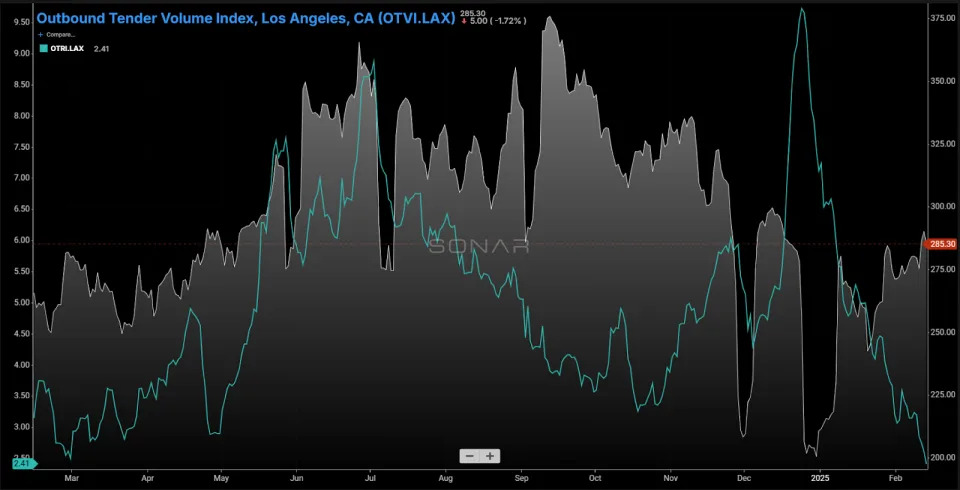
Currently, Los Angeles-area freight volumes are up 7%-8% year over year, yet rejection rates remain below 3%, indicating a loose capacity environment. With average hauls exceeding 900 miles and rates rising since last summer, carriers are increasingly prioritizing California over smaller, less lucrative markets like Laredo.
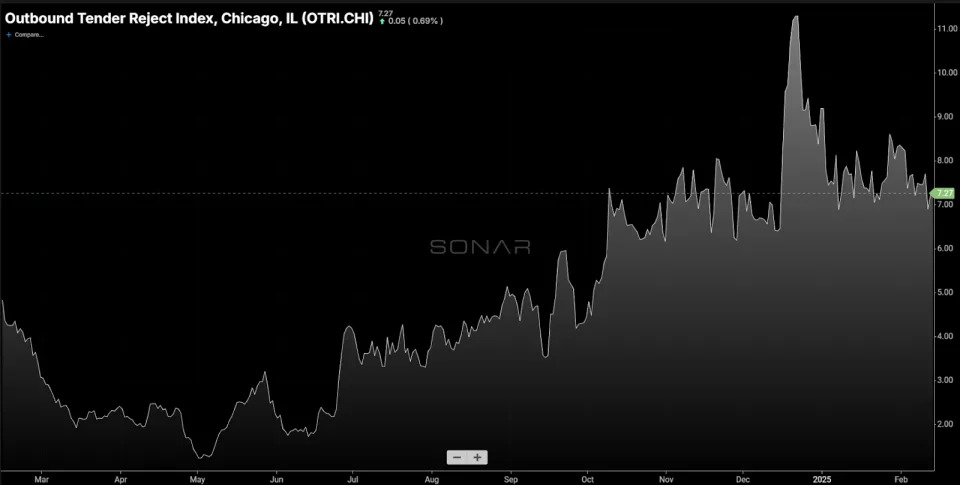
Laredo isn’t the only market where capacity is starting to show vulnerability; the Chicago market has also seen rejection rates climb and sustain above 7%.
The overriding theme that a meaningful amount of capacity has left and continues to leave the domestic truckload market may be the biggest reason for the increases in these market-level rejection rates. Carrier networks are becoming more difficult to manage as there is less buffer when shifts in demand arise.
About the Chart of the Week
The FreightWaves Chart of the Week is a chart selection from SONAR that provides an interesting data point to describe the state of the freight markets. A chart is chosen from thousands of potential charts on SONAR to help participants visualize the freight market in real time. Each week a Market Expert will post a chart, along with commentary, live on the front page. After that, the Chart of the Week will be archived on FreightWaves.com for future reference.
SONAR aggregates data from hundreds of sources, presenting the data in charts and maps and providing commentary on what freight market experts want to know about the industry in real time.
The FreightWaves data science and product teams are releasing new datasets each week and enhancing the client experience.
To request a SONAR demo, click here .
The post Truckload rejection rates surge in largest US-Mexico cross-border market appeared first on FreightWaves .





